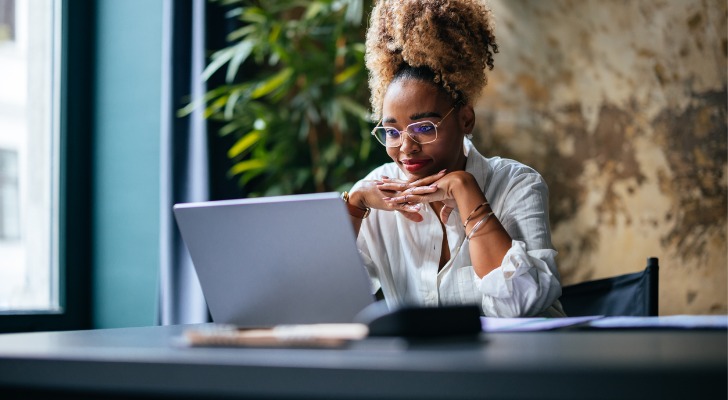Recent changes to federal law allow employers to make matching contributions to employees’ 401(k) accounts using after-tax dollars. Employees can decide whether their contributions are made on a pre-tax or after-tax basis. However, it’s up to the employer to offer this option or provide matching contributions at all. If an employer does offer the choice and an employee opts for after-tax matching contributions, taxes on those Roth employer contributions must be paid in the current year. Here’s how it works.
Talk to a financial advisor about your retirement savings plan. Connect with an advisor for free.
Roth 401(k) Basics
A Roth 401(k) is a qualified retirement plan that lets employees choose to defer a portion of their salary. Instead of receiving the money when it’s earned, you can place it in a tax-advantaged retirement account. Employers can also choose to match employee contributions, which can significantly increase the size and growth of a retirement account.
Unlike regular 401(k) plans, in which employees contribute pre-tax, Roth 401(k) contributions are made after the employee pays income taxes on the contributed amount.
The benefit of this arrangement is that withdrawals of the contributions plus any investment earnings can be withdrawn tax-free after the employee reaches age 59 ½ and the account is at least five years old. For comparison, withdrawals from regular 401(k) accounts are taxed as regular income.
How Roth 401(k) Matching Works

Until recently, employer-matching contributions to 401(k) plans were required to be made on a pre-tax basis. However, the SECURE 2.0 Act has changed this rule, giving employees more flexibility.
Under the SECURE 2.0 Act, employers can now allow employees to choose whether to receive matching contributions as pre-tax or after-tax (Roth) funds. If an employer offers the Roth matching option, employees can decide how they want their contributions treated for tax purposes.
Unlike some provisions of the law, this Roth employer matching option is effective immediately.
To implement this change, employers must update their 401(k) plan documents. Once added, employees can opt to receive their employer matches as either traditional pre-tax contributions or Roth after-tax contributions, depending on their financial strategy.
An Example of Roth Employer Matching
Employer matching can significantly increase the growth rate of an employee’s retirement savings account.
For instance, let’s say a 35-year-old employee making $60,000 per year elects to defer 3% of their salary. This would result in the employee contributing $1,800 per year to retirement. After 30 years, assuming an 8% growth rate and not accounting for any pay increases, this would result in a retirement savings account worth approximately $204,916.
With an employer matching contribution equal to 3%, this would put another $1,800 per year into the account. After 30 years, assuming an 8% annual investment return and not accounting for any pay raises, this would roughly double the amount in the retirement account.
Making the Most of a Roth 401(k)
In order to get the best use of the new 401(k) account rules, employees can start by asking the administrator of their employer’s retirement plan whether it includes a pre-tax employer matching option. If the option exists, the employee can make the most out of it by deferring at least as much salary as the employer will match.
Roth retirement accounts are most effective when contributions and earnings are allowed to grow for a long period of time. Therefore, starting to save for retirement at a younger age is an important way to make the most of a 401(k) plan that allows Roth-style after-tax employer matching contributions.
Another way to maximize the benefits of a tax-advantaged retirement savings account is to increase contributions regularly. When salary deferrals are designated as a percentage of the employee’s salary, this will automatically increase contributions when the employee receives a pay hike. To save even more, employees can arrange to have 100% of any pay increases contributed to the retirement account.
Bottom Line

Recent changes to 401(k) regulations now allow employers to give employees the choice of receiving matching contributions on either a pre-tax or after-tax (Roth) basis. If employees opt for Roth matching contributions, they will owe taxes on those contributions in the year they are made. Additionally, all employer matching contributions must be fully vested immediately.
Tips for Creating Your Retirement Plan
- A financial advisor can help you take care of your finances when you’re retired. SmartAsset’s free tool matches you with vetted financial advisors who serve your area. You can have a free introductory call with your advisor matches to decide which one you feel is right for you. If you’re ready to find an advisor who can help you achieve your financial goals, get started now.
- Are you self-employed? You won’t have access to a 401(k) but don’t let that be an excuse to put off saving for retirement. You can still save by opening a SEP-IRA. A SEP-IRA is relatively easy to set up and has flexible rules on annual contributions.
- It can be a challenge to save for retirement if you don’t earn a lot of money. However, there are a few incentives to help individuals and couples with low or moderate income. One to take advantage of is the Saver’s Tax Credit. It allows eligible filers to receive a tax credit of up to 50% of their retirement savings.
Photo credit: ©iStock.com/jygallery, Photo credit: ©iStock.com/Charday Penn, Photo credit: ©iStock.com/miniseries
